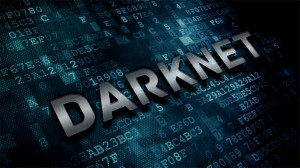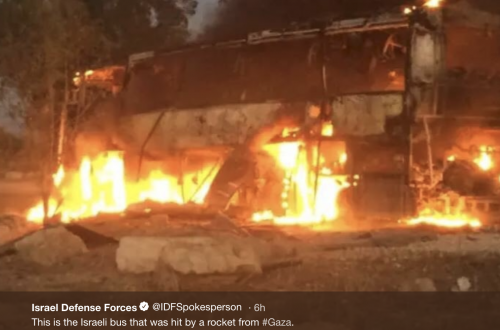This is a cross post by Mohammed Razaq – a Research assistant at Quilliam
Censoring online content has for a long time been received negatively by the general public. Unfortunately, we live in a world in which security and civil liberties aren’t always able to mutually coexist. The internet increasingly plays a larger role in our day-to-day lives. For the most part,the internet has allowed for positive change, for instance, allowing for the access of huge amounts information on a given topic, or by allowing us to befriend individuals around the world. However, with such benefits also comes great risk. Some choose to access ‘instructables’ on how to create explosives and befriend Jihadists fighting around the world. Given the huge impact technology has on policy It is imperative that government responses to issues which contain a cyber element are well-informed by sound understanding of how the cyber realm and technologies used to facilitate online activity operate. The failure to do so risks catastrophic consequences, or unnecessarily impinge upon civil liberties
Given the recent rise of IS, social media outlets have been flooded with extremist and terrorist related material. Government attempts to entirely remove such material is both ineffective at tackling the underlying issue of extremism and ultimately futile. Current measures in place to tackle extremism online include the removal of online content which meets one or more of the following criteria: contains speeches, messages, or essays calling for religious or racial violence, contains videos of violence with messages of glorification or the praising of violent acts, contains instructions on how to make a bomb. Content ‘removal’ is currently carried out by the Counter Terrorism Internet Referral Unit (CTIRU) who are responsible for flagging illegal content to social media outlets and Internet Service Providers (ISPs) who then remove the content in question, provided it does meets the required criteria. To date, the CTIRU has removed around 40,000 pieces of material that meets the criteria listed above, and have stated that they currently remove around 1,100 pieces of material a week with 800 estimated to be Syria related. However, due to the digital nature of the content being uploaded, it is virtually impossible to permanently remove the content which is being uploaded. Copies of digital content can be copied and re-uploaded with relative ease, even by those who have only a basic understanding of how to use a computer. Additionally, due to the nature of extremist related material, which tends to require context, it is not analogous to Child Sexual Abuse Imagery (CSAI) and therefore algorithms aimed at filtering content cannot be applied as easily.
By censoring material on the open-web, the government also risks extinguishing the light created by jihadists which makes them visible to the security services by pushing them into the dark net. This would make it much more difficult to identify and prevent acts of terrorism. We have already begun to see signs of potential moves to the use more anonymous networks and tools. Earlier this year, there were proposals for supporters of violent Jihad to use Bitcoin, a cryptocurrency, to fund terrorist activity, and thus help bypass law enforcement agencies. Although there have recently been cases in which those that use the Tor network, a network which provides greater anonymity to users, to communicate or carry out nefarious activities have been identified and arrested by law enforcement agencies, the process was much more complicated and time consuming than it otherwise would have been on the open-web. Such cases include the recent Operation Onymous, a collaborative effort by the FBI, Europol, and the Immigration Customs Enforcement (ICE), which located and closed 400 hidden servers, including the infamous Silk Road, the online marketplace for everything considered unholy to law enforcement agencies around the world. Although such incidents have shown potential vulnerabilities in the Tor network, they still remain a much securer platform for anonymity than open-web alternatives. It is therefore important we prevent extremists from migrating to such platforms due to online censorship. The use of networks such as Tor would only make counter-terrorism efforts even more difficult than it already is. Those that seek to travel to war-torn Syria to kill innocent civilians, aid workers, and journalists to broadcast to the world are outliers within society — not the norm. Increasing their anonymity would only make counter-terrorism more difficult.
As opposed to attempting to entirely remove material, the retention of material, such as IS videos, could help work as an effective counter-extremism and counter-terrorism tool. Such online material and information is valuable open source intelligence (OSINT) material which can be used by a number of agencies, whether governmental or non-governmental. In terms of counter-extremism, there are two main ways in which the abhorant material uploaded by IS and its supporters can be used. The first involves the use of the material in formulating strong counter-narratives. This has been displayed by the U.S. State Departments Think Again Turn Away campaign, which uses IS material to marginalise support for Jihadist groups within Syria and Iraq. Counter-messaging which seeks to engage civil society in the wider debate of extremism, and not just terrorism, can help drain the pool from which Jihadist groups recruit from in the long-term if carried out effectively. Retention of material can also help Non Government Organisations (NGOs) and Think Tanks study such material to provide society and government with insight into how such groups operate and how best to undermine their activities.
It is therefore important that the government, as well as wider society, understand that possible technological implications that may result from policies such as censorship. Poorly thought out policies regarding cyber related issues unfortunately still give meaning to words spoken by the former CIA general Michael Hayden, who has previously stated that “Rarely has something been so important and so talked about with less and less clarity and less apparent understanding”.



